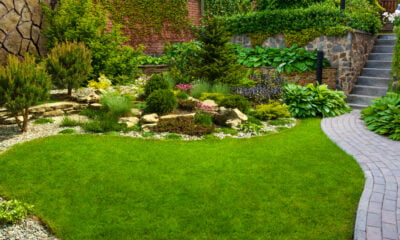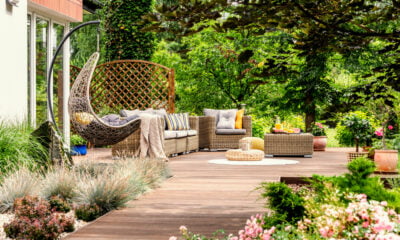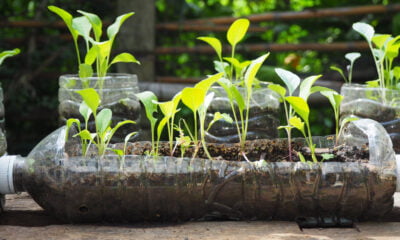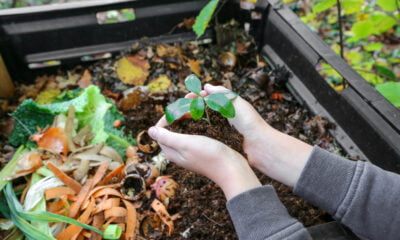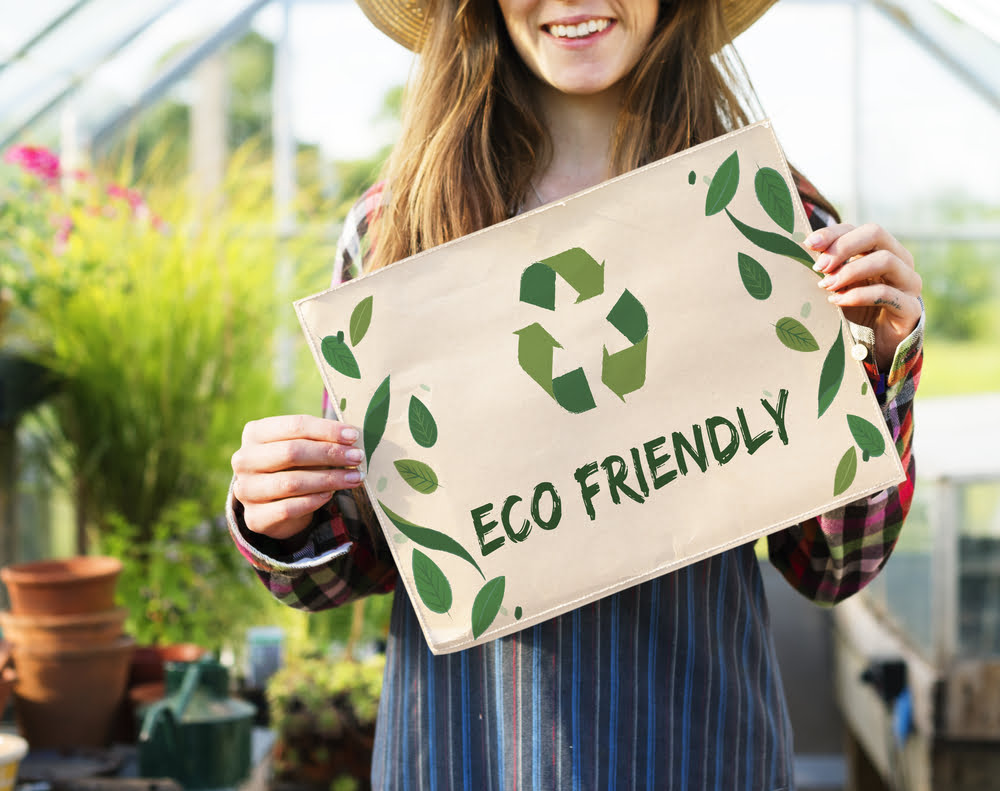
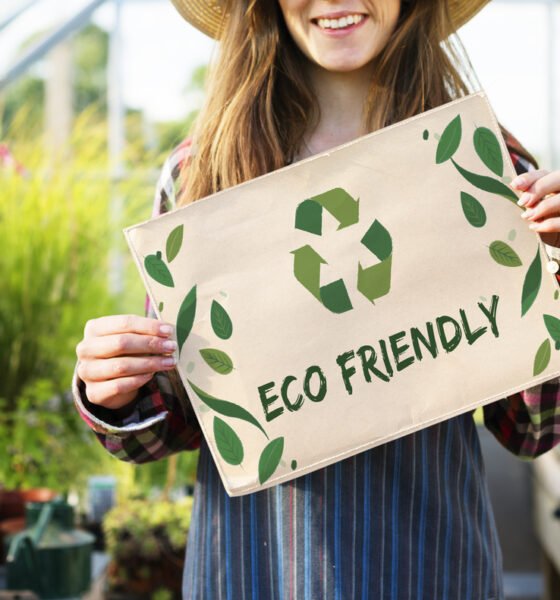
Features
A Comprehensive Guide To Designing an Eco-Friendly Garden
We wanted to write an article about a major paper that McKinsey published earlier this week. The authors wrote that the agricultural sector is becoming more sustainable.
Many consumers want to follow in their footsteps, but aren’t sure how to do so. They can follow some of guidelines on creating sustainable gardens to help.
Creating an eco-friendly garden is not only beneficial for the environment but also for our own well-being. By implementing sustainable practices and using natural resources wisely, we can create a beautiful and thriving garden that supports local ecosystems and minimizes our impact on the planet.
Steps to Create a Great Eco-Friendly Garden
A growing number of people are starting their own gardens for a variety of reasons. One study found that 67% of people are growing their own food. One of the biggest reasons is that people want to lower their carbon footprints.
Designing a dream garden is an exciting and fulfilling endeavor. It’s about creating an outdoor space that reflects your personality and meets your needs. Thoughtful garden design is essential to transform your vision into reality. It’s not just about planting flowers and trees. It’s about carefully planning and arranging elements for a harmonious and functional garden.
A well-designed garden enhances the beauty of your home, creates a peaceful retreat, and provides a space for relaxation and enjoyment. It brings nature closer to your doorstep and allows you to connect with the outdoors.
There are a variety of things that you can do to create an eco-friendly garden. This practical guide will provide valuable insights and helpful tips to design your dream garden.
Assessing Your Space And Needs
The first step in creating your ideal garden is figuring out how much room you have to work with. It allows you to understand the unique characteristics and limitations of your space. By assessing your garden, you can make informed decisions and create a thriving garden.
Start by evaluating the size and shape of your garden. Take measurements and consider any existing structures or features that may impact your design. This assessment will help you determine how much space you have to work with and how to optimise it.
Next, consider your needs and desires for the garden. Think about how you plan to use the space. Do you want a tranquil retreat, a vibrant flower garden, or a functional area for outdoor activities? Assessing your needs and desires will guide your design choices and help you create a garden that aligns with your lifestyle.
Climate, soil, and available sunlight are essential factors to consider. Evaluate the climate of your region to determine which plants will thrive in your garden. Assess the soil quality and drainage to ensure it can support the plants you intend to grow. Consider the sunlight your garden receives throughout the day to determine the best placement for different plant varieties.
These factors are vital because they set the foundation for a successful garden. By understanding your garden space and its unique characteristics, you can select plants well-suited to the environment. This assessment also helps you identify challenges or constraints requiring special attention or adaptations in your garden design.
Take the time to thoroughly assess your garden space and evaluate your needs and desires. Consider the climate, soil, and available sunlight to ensure your garden thrives. This careful assessment will lay the groundwork for a well-planned and successful garden design, allowing you to create a space that is not only visually appealing but also functional and sustainable.
Choosing Plants And Greenery
Plant selection plays a crucial role in garden design, especially if you want your garden to be eco-friendly. It contributes to the overall aesthetic and atmosphere of your garden, but it can also help improve the surrounding environment. Choosing the right plants based on your garden’s conditions and desired aesthetic is essential for creating a harmonious and thriving outdoor space.
One of the key aspects of making an eco-friendly garden is choosing native plants that are well-suited to the local climate and require minimal water and maintenance. These plants have evolved to thrive in their natural environment, making them more resilient to pests and diseases. Additionally, they provide food and shelter for local wildlife, contributing to biodiversity conservation.
Consider your garden’s conditions, such as sunlight exposure, soil type, and climate. Different plants require different lighting conditions to flourish. Assess the soil’s drainage and fertility to determine which plants will grow well. Understanding your garden’s conditions will help you select plants that are well-suited to thrive in your specific environment.
When choosing plants, think about the desired aesthetic and style of your garden. Do you prefer a formal, structured look or a more relaxed and natural ambience? Consider the overall colour scheme you want to achieve and how different plant colours can complement or contrast each other.
Texture is another essential aspect to consider. Plants with different leaf shapes and textures add visual interest and depth to your garden design. Combine plants with various foliage textures, such as smooth, spiky, or feathery, to create a dynamic and visually appealing landscape.
Height is another factor to keep in mind. Consider the ultimate size and growth habits of the plants you choose. Pay attention to their mature height and spread to ensure they fit well within the space and don’t overshadow other plants.
To make informed plant selections, consult with local landscape gardeners near you on a platform like MyBuilder. Landscape gardeners possess knowledge of the local climate, soil conditions, and plant species that thrive in your area. They can offer expert advice on selecting plants that are well-adapted to your region and provide insights on which plants are easier to maintain.
Remember to research the maintenance requirements of the plants you select. Some plants may need more care and attention than others. Be realistic about the time and effort you can dedicate to plant care to ensure your garden remains healthy and vibrant.
Sustainable And Eco-Friendly Practices
Today, more than ever, it’s crucial to create gardens that are both sustainable and eco-friendly. It allows us to create beautiful outdoor spaces while minimizing our environmental impact. We can conserve resources, support biodiversity, and promote a healthier ecosystem by adopting sustainable practices.
Water conservation is a crucial aspect of eco-friendly garden design. Implementing efficient irrigation systems, collecting rainwater, and grouping plants with similar water needs can significantly reduce water usage. Mulching around plants helps retain moisture in the soil and suppresses weed growth. By conserving water, we contribute to the sustainability of our gardens and preserve this precious resource.
Another important consideration is reducing our reliance on chemical fertilizers and pesticides. Instead, we can opt for organic alternatives such as compost or natural pest control methods. This not only protects the health of our soil, water sources, and beneficial insects but also ensures that our garden remains a safe space for children, pets, and wildlife.
Organic gardening is another sustainable practice to embrace. Avoiding synthetic fertilizers and pesticides reduces chemical runoff and protects beneficial insects and pollinators. Instead, opt for organic fertilizers and natural pest control methods. Composting kitchen scraps and yard waste creates nutrient-rich soil amendments, promoting healthy plant growth without relying on synthetic chemicals.
Finally, you will need to make sure that water preservation is a priority. Water conservation is another crucial aspect of an eco-friendly garden. By installing rainwater harvesting systems or using efficient irrigation methods such as drip irrigation or soaker hoses, we can minimize water waste and ensure that every drop counts. Mulching around plants also helps retain moisture in the soil while suppressing weed growth.
Take Your Time to Create a Thriving Eco-Friendly Garden
Native plant selection is essential for supporting local ecosystems. Native plants are well-adapted to the climate, soil, and wildlife of the area. They require less water and maintenance, provide food and shelter for native wildlife, and contribute to biodiversity. Incorporating native plants into your garden design benefits the environment and creates a sense of place and connection with the local ecosystem.
By embracing sustainable and eco-friendly practices in our garden design, we can positively impact the environment. Water conservation, organic gardening, native plant selection, waste reduction, and wildlife-friendly features create an environmentally friendly garden. Let’s strive to create outdoor spaces that are beautiful, sustainable, and beneficial to the planet.
Maintaining And Evolving Your Garden
Ongoing maintenance is crucial for a dream garden to thrive and remain beautiful over time. It requires dedication and regular care to ensure the health and vitality of your plants and the overall appeal of your garden.
A healthy garden requires regular, adequate watering. In order to promote strong root development, water plants deeply and infrequently. Avoid overwatering, which can lead to root rot and other plant diseases. Consider using efficient irrigation systems like drip irrigation or soaker hoses to minimise water waste. Adjust your watering routine based on the specific needs of your plants and the weather conditions.
Fertilising is another key aspect of garden maintenance. Provide plants with the necessary nutrients to support their growth and vitality. Use organic or slow-release fertilisers to avoid the risk of over-fertilisation. Follow the instructions and recommended dosage for each plant species.
Pruning plays a vital role in maintaining the shape, health, and aesthetic appeal of your plants. Regularly remove dead, damaged, or diseased branches to prevent the spread of infections. Prune for shape and size control, allowing proper airflow and sunlight penetration. Learn the pruning requirements of different plant varieties to ensure you prune them at the appropriate times and in the correct manner.
It is essential to regularly assess and update your garden as it evolves over time. Observe the growth patterns and needs of your plants. Monitor changes in light conditions or soil composition that may impact their well-being. Make required changes to ensure optimal growing conditions. Consider refreshing the garden design by adding new plants, rearranging existing elements, or introducing new features.


 Environment10 months ago
Environment10 months agoAre Polymer Banknotes: an Eco-Friendly Trend or a Groundswell?

 Environment11 months ago
Environment11 months agoEco-Friendly Home Improvements: Top 7 Upgrades for 2025

 Features9 months ago
Features9 months agoEco-Friendly Cryptocurrencies: Sustainable Investment Choices

 Features10 months ago
Features10 months agoEco-Friendly Crypto Traders Must Find the Right Exchange
